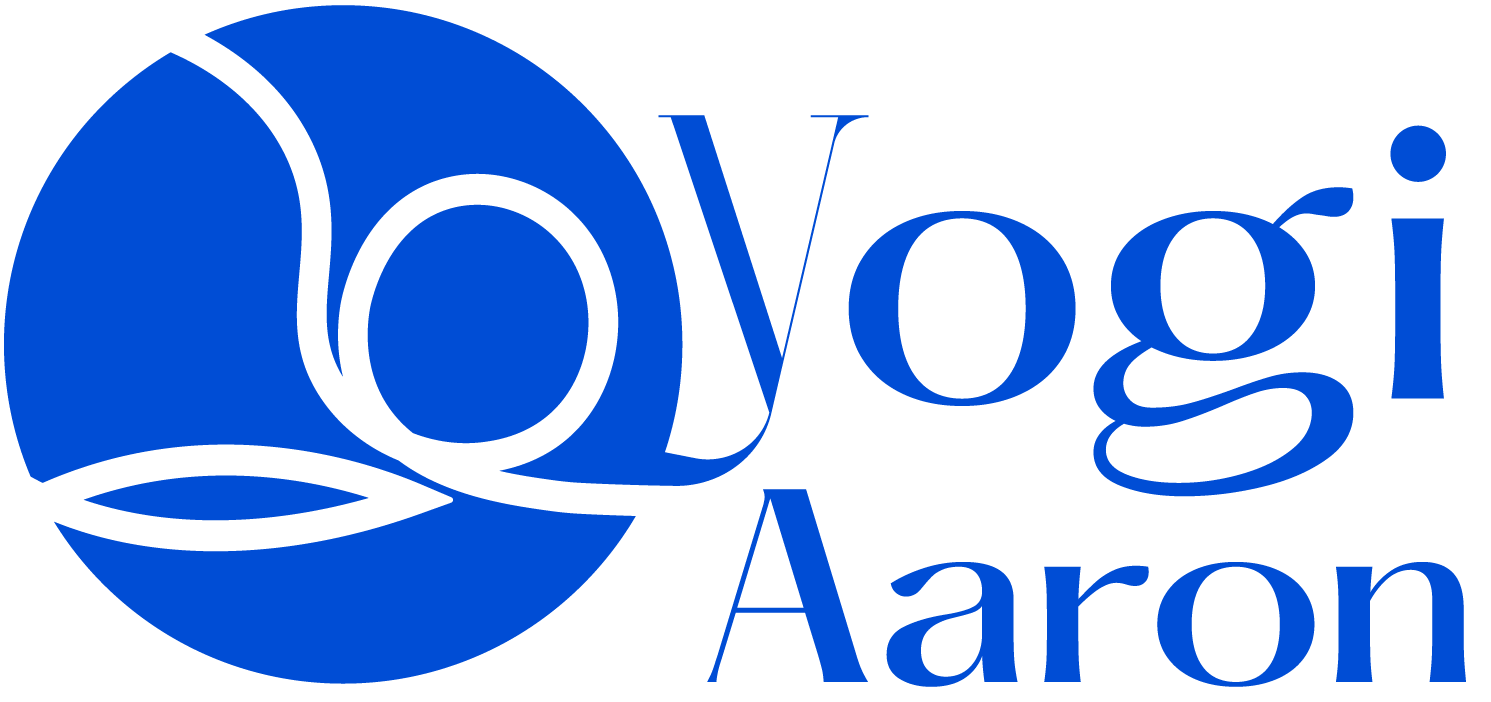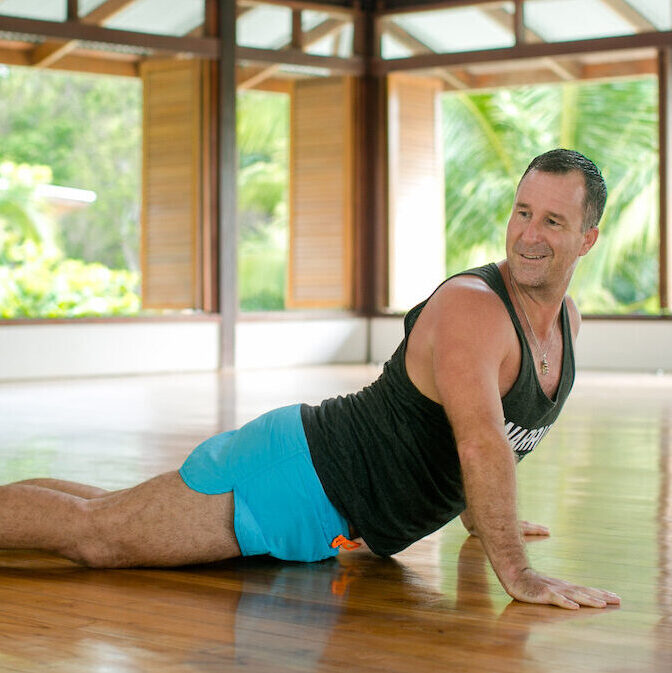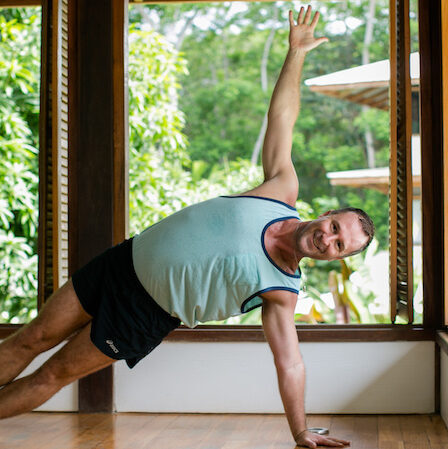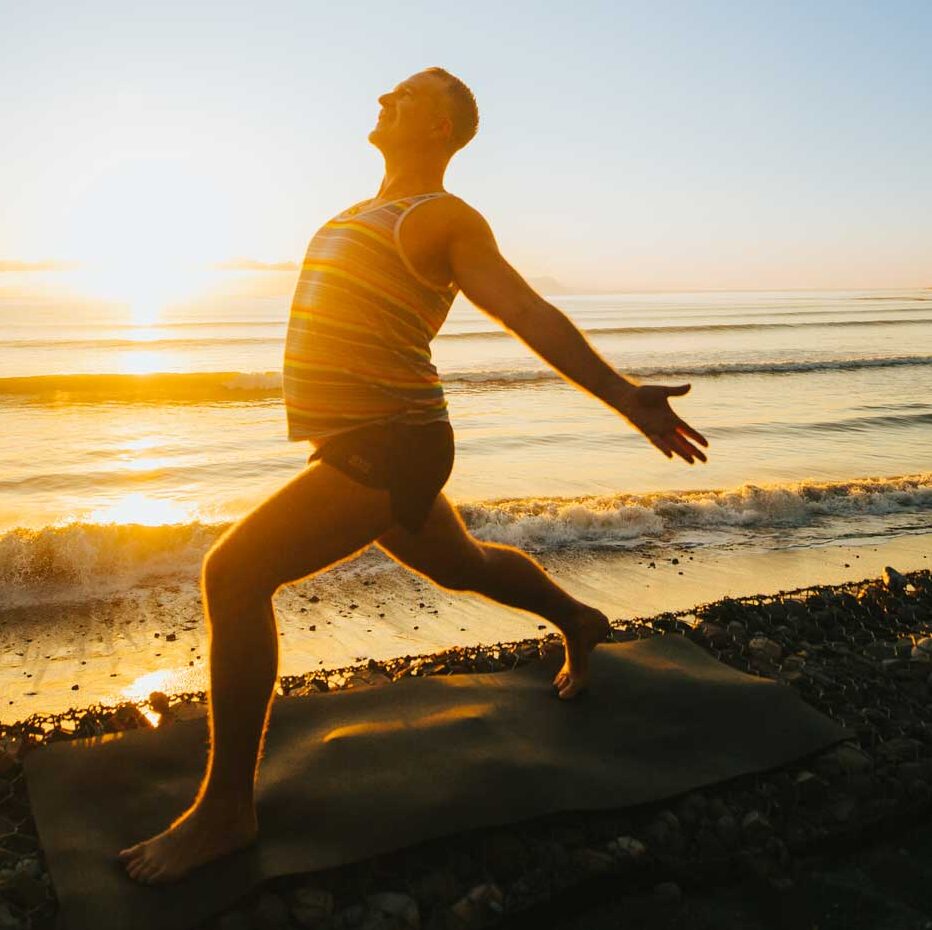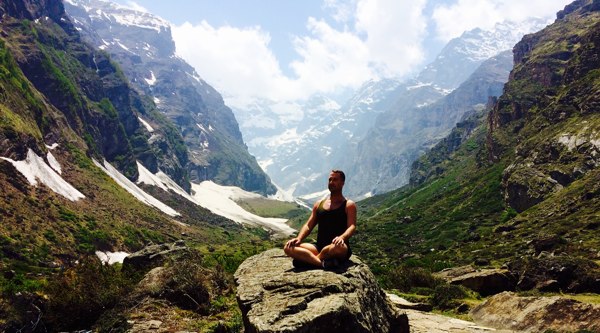Let’s talk about one of my favorite topics: yoga for glutes.
Have you ever experienced lower back or knee pain during or after a yoga class? Do you struggle to maintain stability in standing poses, like Warrior II or Tree pose?
Or maybe, like me, you’ve eagerly awaited a jog after a long day of work, only to tweak your knee at mile two and hobble the whole way home.
If you can relate to these scenarios, it’s time to start strengthening and activating your glutes today.
(Note: I didn’t mention yoga glute stretches… more in a sec.)
The Perils of Sitting
Your glutes, or the muscles in your buttocks, are some of your body’s largest and strongest muscles. They play a crucial role in supporting your pelvis, stabilizing your hips, and providing a solid foundation for your spine and lower body.
There’s one problem: For most of us, our glutes are not working correctly because we spend all day sitting down.
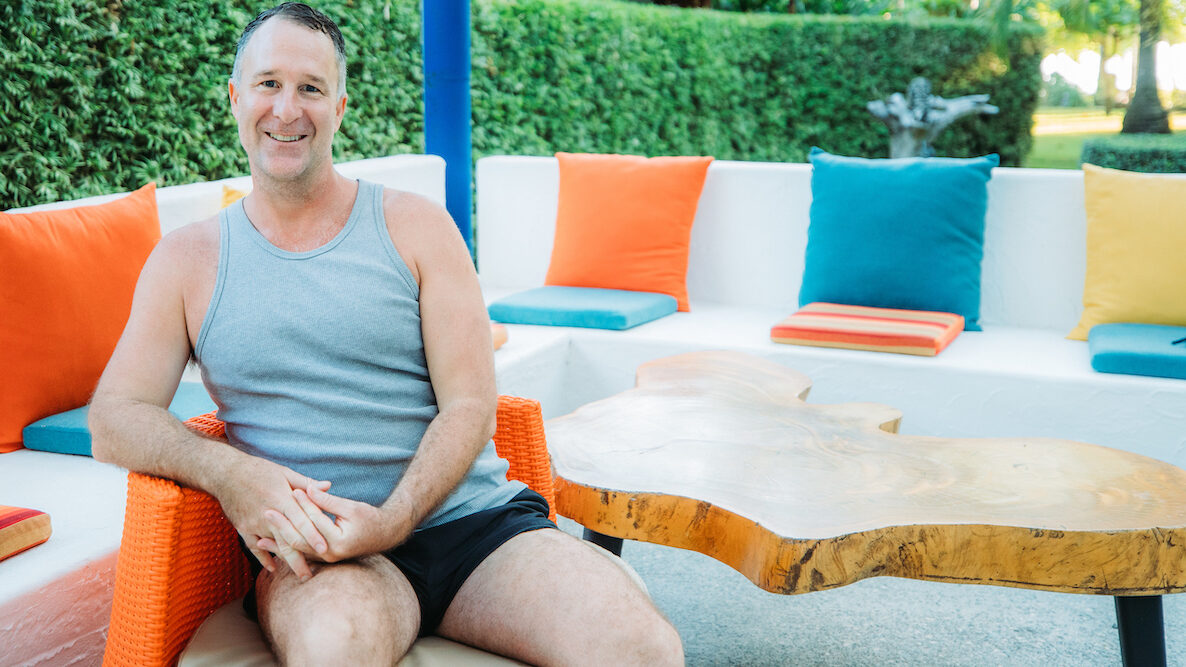
Think about it briefly: How many hours a day do you spend sitting? Is it four hours? Six? More than eight?
If your answer is high, you’re not alone. Sedentary jobs have increased by 83 percent since 2015, and over 80 percent of jobs are now predominantly deskbound. Yet that doesn’t decrease the very real threats of spending hours on end sitting: the substantial risk of heart disease, high blood pressure, diabetes, depression, and obesity.
Before you panic, there is a light at the end of the tunnel…
You can counteract the ill effects of sitting (and equip your body to handle life’s daily stressors) when you activate and strengthen the glutes properly — and you can do it in just a few minutes a day.
That means less pain and injury and more strength and mobility, so you finally feel good when you move your body.
Let’s explore easy yoga poses for glutes that anyone can practice. Commit to practicing these yoga for glutes exercises regularly. Your future self will thank you!
A quick introduction to your glute muscles
Before we dive into the best yoga poses for glutes, it’s helpful to understand how your glute muscles function.
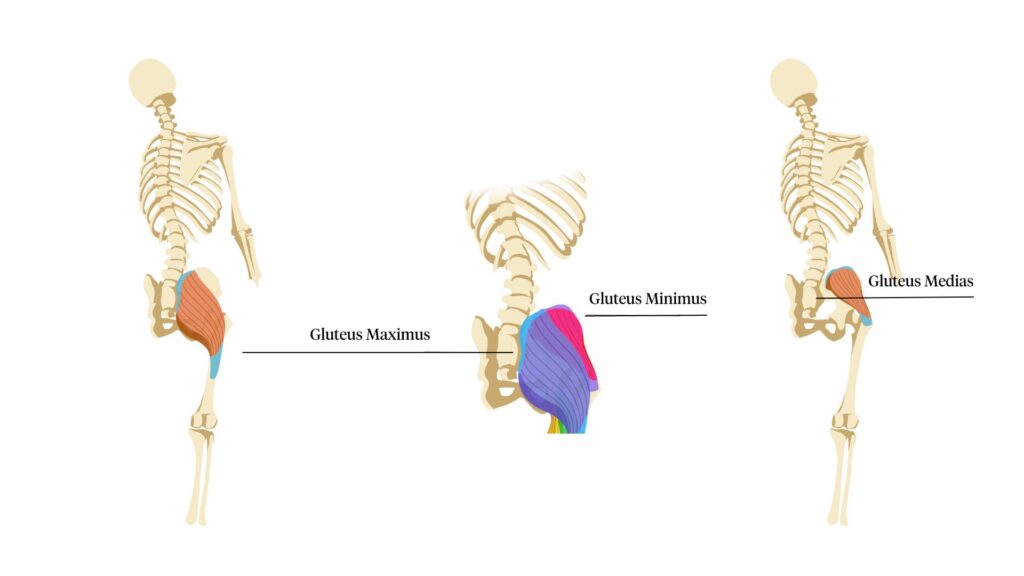
The gluteus maximus
The gluteus maximus extends from the tuberosity of the femur into the sacrum, iliac crest, and tailbone; it is responsible for moving the hips and thighs.
Imagine for a sec that you’re driving down a bumpy, pot-holed road. You quickly realize that your shock absorbers are worn and aren’t adequately buffering the blows from the rough road conditions.
As a result, your axles start to take the brunt of the potholes. Except your axles weren’t designed to act as shock absorbers, and they will eventually reach a breaking point.
I want you to think of your gluteus maximus as your shock absorbers and your lower back and knees as your two axles. If you have a weak, inactive gluteus maximus, your lower back and knees will be forced to step in and act as your body’s shock absorbers. Eventually, they will bear the repercussions, and the following problems may ensue:
- Difficulty with hip extension or performing activities like climbing stairs, running or standing up from a seated position.
- Instability in the knee joint
- Poor posture resulting in lower back pain, neck pain, shoulder pain, and headaches
- Reduced athletic performance or problems jumping, sprinting, or throwing
The gluteus medius
The gluteus medius attaches to the outer surface of the greater trochanter and extends into the outer surface of the ilium, a part of the pelvis; it supports hip movement, spinal stability, and balance.
You use your gluteus medias whenever you internally or externally rotate your legs. If you struggle with pelvic alignment and gait issues, you might not need a pelvic reset but rather a gluteus medius activation.
If your large gluteus maximus isn’t firing properly, often your gluteus medius has to step in and do the work — and stress, trauma, and overuse follows.
The following are common problems that can occur if you don’t take the time to practice yoga for glutes:
- Difficulty with sports and activities that involve lateral movements, like tennis, basketball, or skiing.
- Difficulty with balance and coordination, especially on uneven surfaces
- Pain and discomfort in the hip or outer thigh area
- Groin pain due to the glute medias’ inability to abduct properly
The gluteus minimus
The gluteus minimus is a small, fan-shaped muscle that originates on the outer surface of the ilium and inserts on the greater trochanter of the femur. This muscle works with the gluteus medius to abduct the hip (to move the hip away from the body’s midline.)
The gluteus minimus also helps stabilize the pelvis during activities like walking, running, and standing on one leg. If your gluteus minimus is weak, you may experience a range of issues related to the stability and function of your hip joint, like limited hip mobility and difficulty with balance and coordination.
Here’s what I want you to remember:
Your glutes work together to provide stability, support, and movement to your lower back, hips, and knees. Practice yoga for glutes and you’ll strengthen these crucial muscles — and avoid debilitating injuries and pain down any bumpy, pot-holed road.
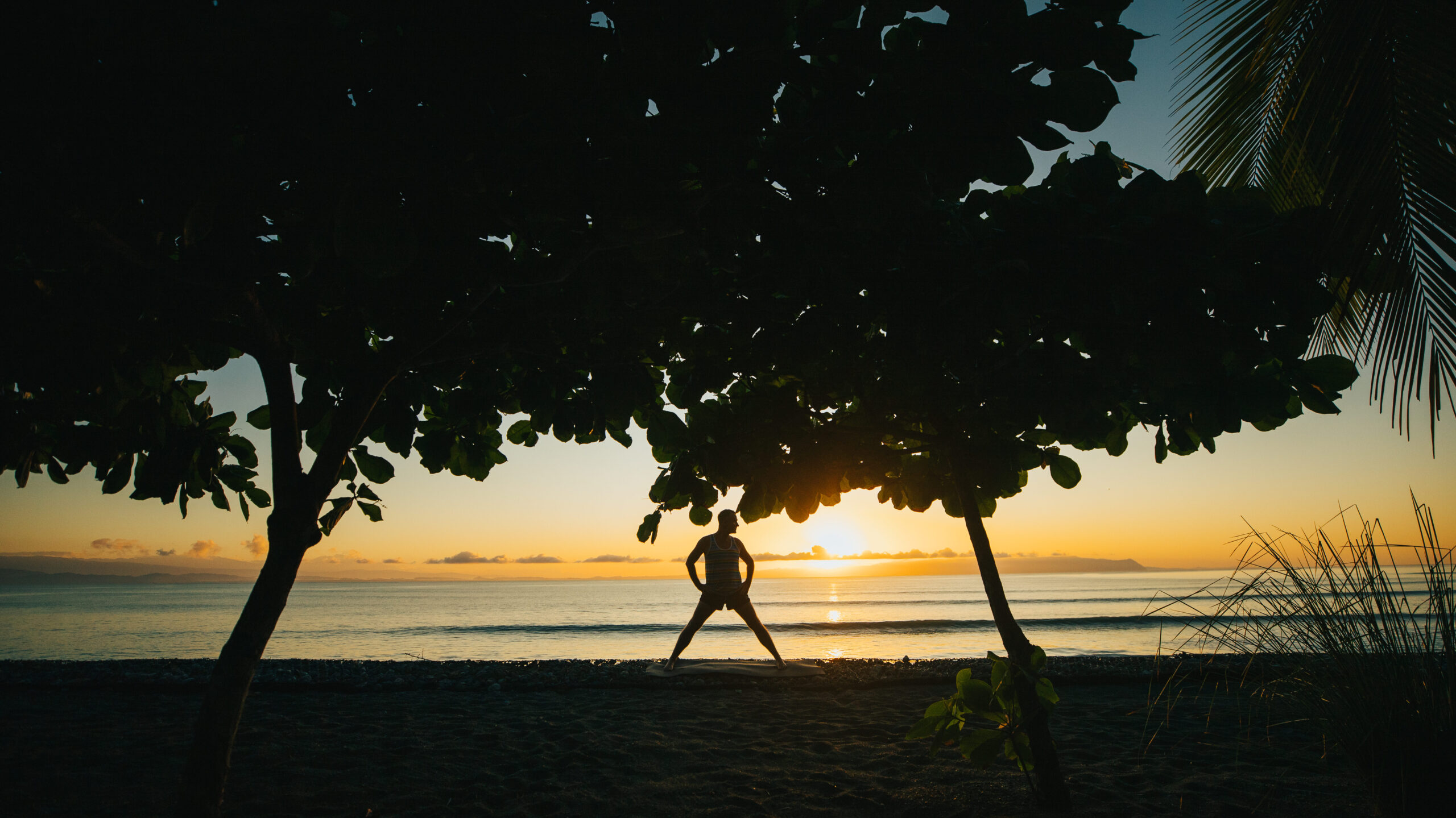
Yoga for glutes: 5 easy poses to practice every day
When it comes to the glutes, we never want to stretch them out. That’s because stretching incapacitates muscle function; it makes your muscles weak, and where there is weakness, instability and injury are sure to follow.
If you’re still searching for yoga glute stretches, I recommend you start here to discover a new approach to stretching and living pain-free.
With that in mind, here are my top Applied Yoga Anatomy and Muscle Activation (AYAMA™) exercises for the glutes.
Only have a few minutes to activate your glutes? Watch my Yoga for Glutes video — one of the free lessons in my 7-day pain-free yoga series!
1. Bridge Pose
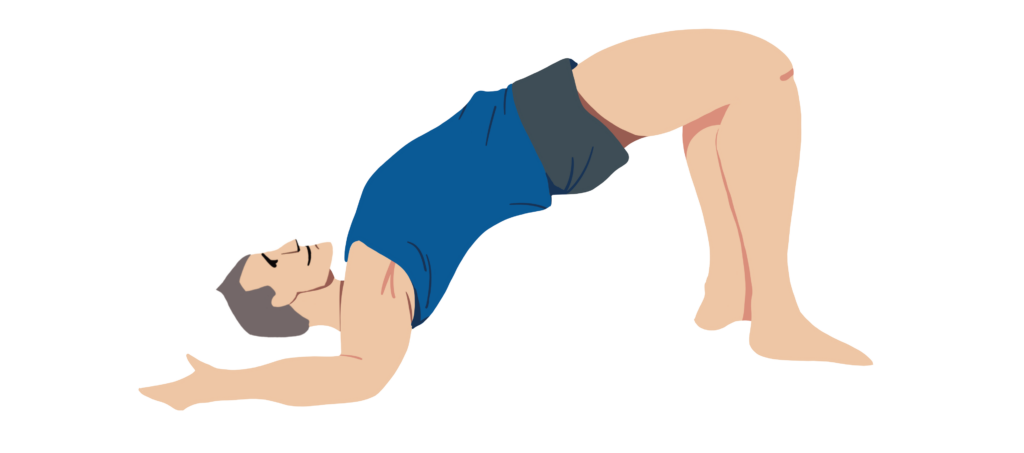
If you only practice one post from this list, make it bridge pose. This popular yoga posture is a potent way to fire up the gluteal muscles while strengthening the lower back: it’s one of my go-to’s for daily AYAMA practice.
Lie on your back, and bend your knees with your feet planted beneath you.
Relax your arms up overhead so you resist the urge to use your arms to lift off the ground.
Now lift the gluteal muscles as high as you can. Ensure that you’re squeezing your buttocks! Don’t let the knees collapse inward or fall open, but instead, imagine you are pressing a block between your thighs.
Hold for six seconds, then repeat the move six times.
Note: It’s normal to feel your lower back muscles while practicing yoga for glutes. So long as there is no pain, know that this pose is working your gluteal muscles.
2. Locust Pose With Leg Lift
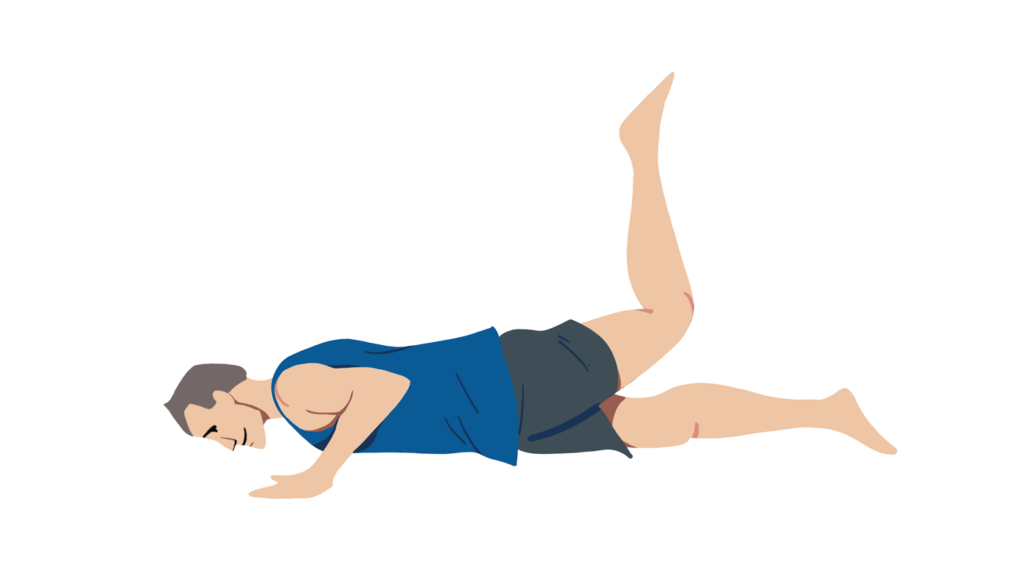
Lie on your stomach. Ensure that both your hips are firmly planted on your mat. Bend your left knee and lift your left thigh bone off the ground.
Ensure your pelvic bones remain rooted to your mat. You might find you can only raise your leg a few inches off the ground, and that’s okay! As you continue to practice this yoga for glutes pose, your leg will continue to go higher and higher.
Hold for six seconds, and repeat it six times.
3. Gluteus Medius Internal Rotation
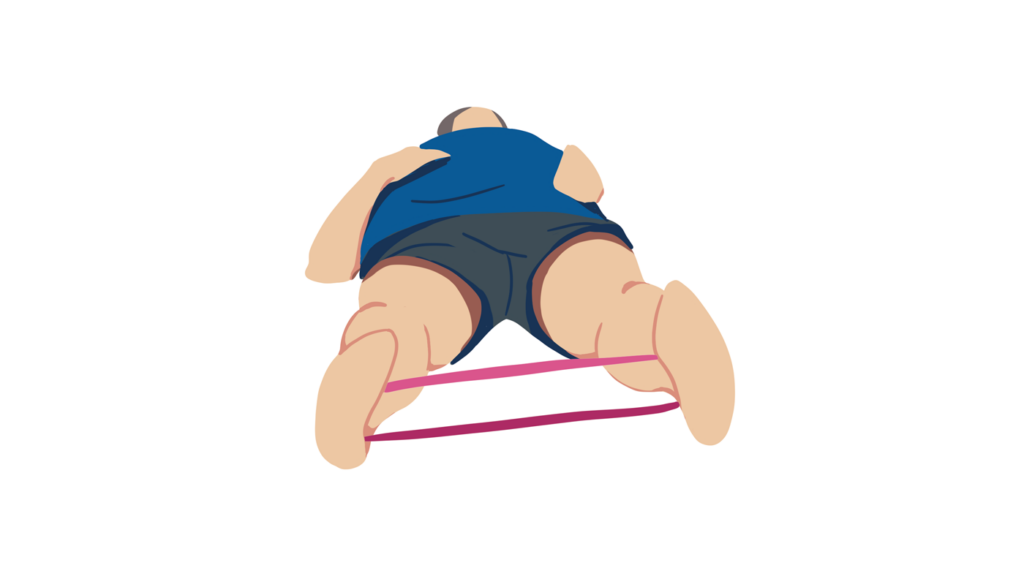
Grab a yoga strap, and loop it around your ankles. Lie down on your mat with your legs extended in front of you.
Begin by internally rotating your legs toward your midline. Now, press the legs out and away from one another as you push into the outer edge of your yoga strap.
Hold for six seconds, and repeat six times.
Note: To target different fibers in your gluteus medius, repeat the above exercise with your legs rotated externally and then with your legs in a neutral position.
4. Chair Pose
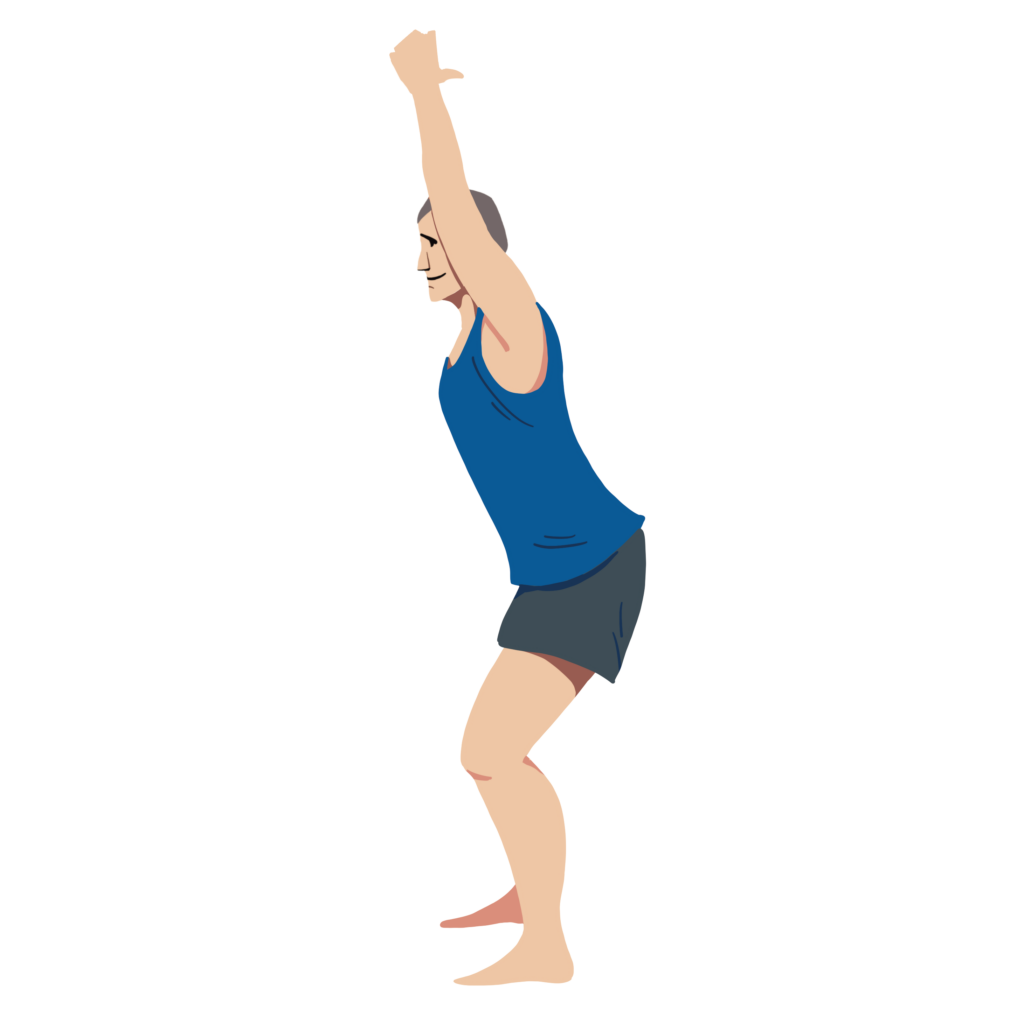
If you’ve read my article about yoga poses for upper back pain, you might recall that I included chair pose in this practice, too! Well, it’s for good reason…
Chair pose is a powerhouse posture. It engages and activates the hips, thighs, and back muscles. Consider that many muscles wrap from the spine into the sacrum (where the glutes are located.) Thanks to this intermingling, as we work on the glutes, we start to affect the muscles in the lower back.
To move into chair pose, take your feet hip distance apart. Bend your knees and send your glutes back like you’re sitting in a chair.
Reach your arms overhead. Pause. Sit back a bit further. Keep your arms extended, but bring them back behind your ears as much as possible. Relax the shoulders — this movement should come from your upper arms.
Hold for six seconds, and repeat six times.
5. Warrior 1 Pose
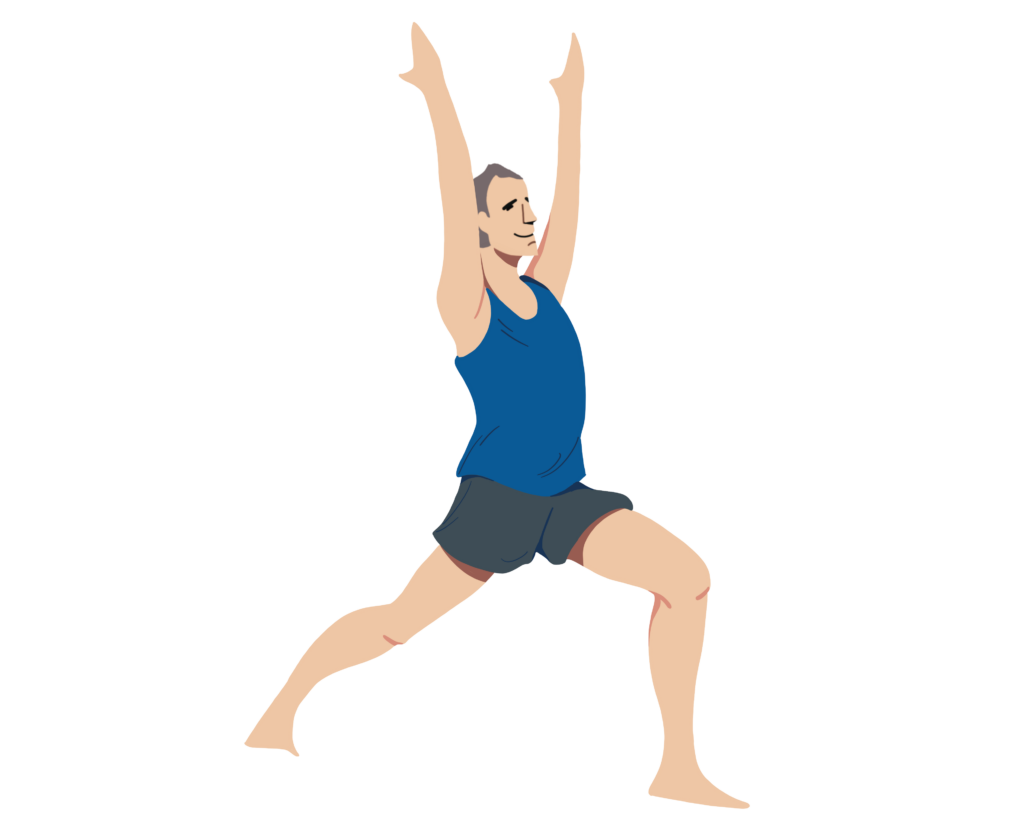
At first glance, Warrior 1 appears simple, easy even. However, when practiced with intention, this yoga for glutes pose fires up and engages your entire body!
Begin in a standing position. Step your left foot back about three or four feet.
With your right foot pointed toward the top of the mat, bend your right knee to enter a lunge. Keep your left leg straight behind you, and turn your left heel approximately 45 degrees while anchoring your back heel into the ground.
Square your hips and squeeze your hip bones in toward your midline. Raise your arms above your head.
Keep the arms as straight as possible as you pull your arm bones back behind your ears.
Keep your core engaged by lifting your pubic bones slightly and squeezing the sides of your abdominals toward your midline. Hold for six seconds, and repeat six times.
Now…
I know some of you are looking for more. You want a more sculpted butt, but you also want to reduce your risk of injury and start activating the glutes so that you exercise more effectively.
If this sounds like you, check out my yoga for glutes workout. In just twenty minutes, you’ll fire up your backside so that you look and feel great.
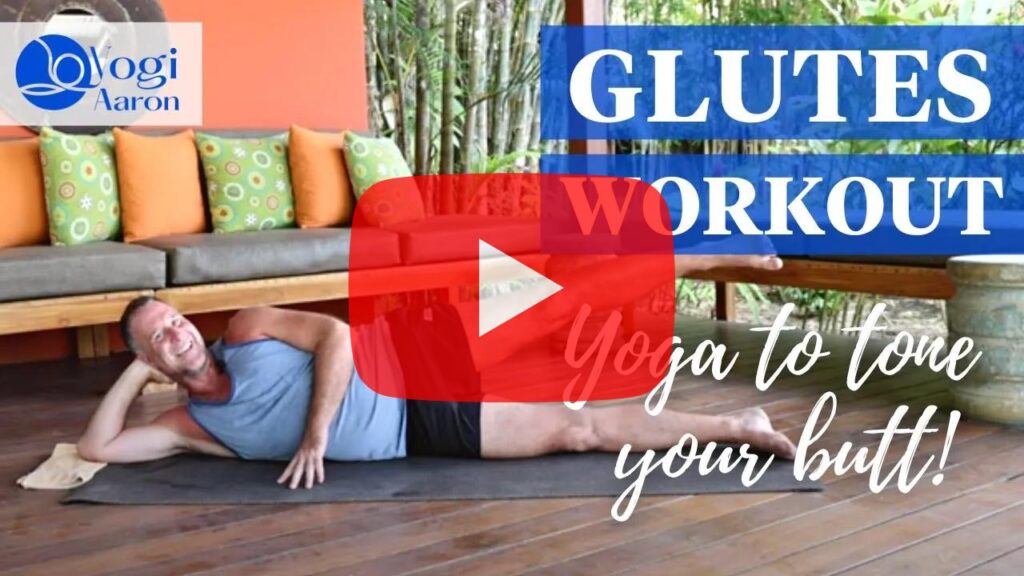
To sum it up
Incorporating yoga for glutes into your regular practice can help strengthen key muscles, improve stability, and prevent injury. Start with these five easy yoga poses — just a few minutes a day is all it takes to restore balance to your body.
Ready to relieve pain for good? Get started with AYAMA™, a revolutionary approach to yoga that’s already helped hundreds of people to live pain-free.
